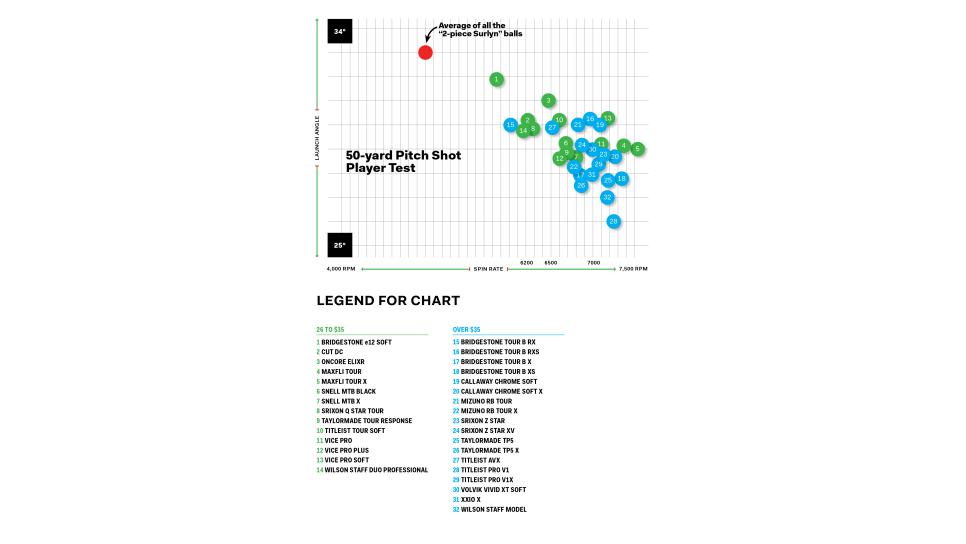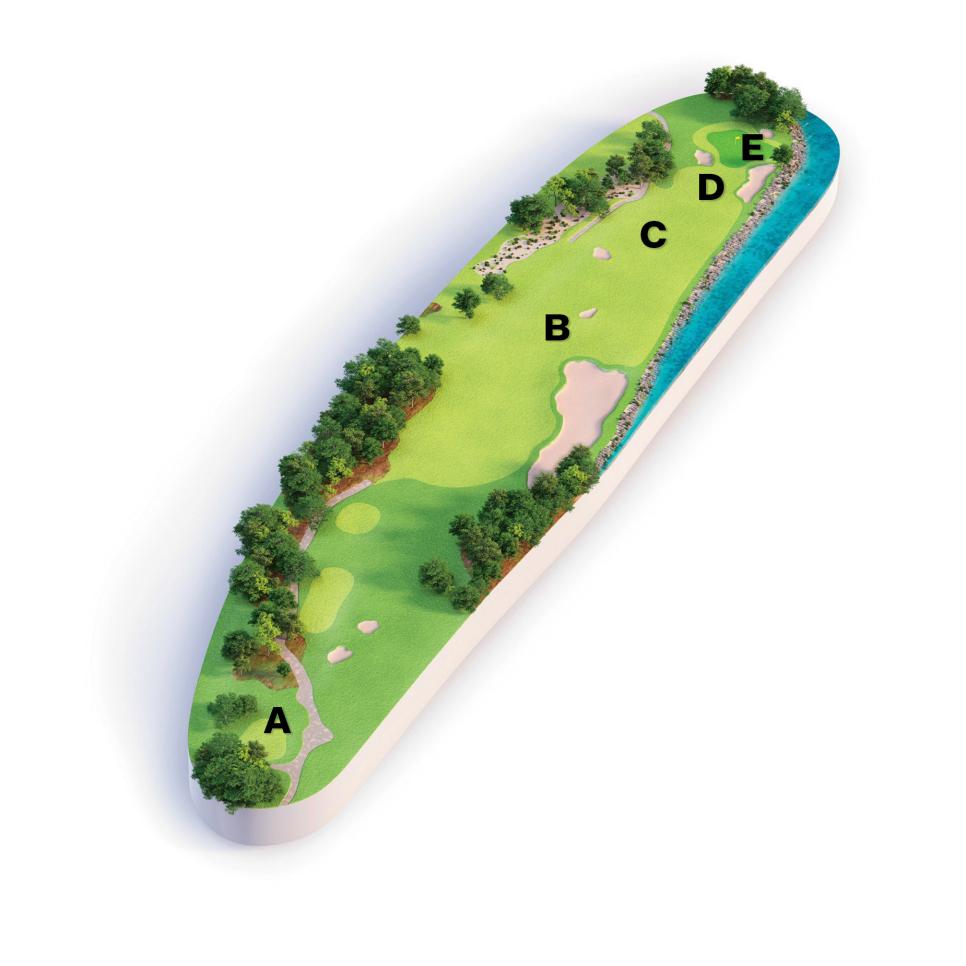Equipment
Best Golf Balls 2020: This data will help you choose the perfect golf ball

One way our team at Golf Digest has tried to understand and illustrate the differences in golf balls is a specific short-game test we’ve been running for many years. Using good players and a Foresight Sports GCHawk launch monitor, we evaluated each ball’s spin and launch angle on 50-yard wedge shots (above). The specific shot we use is intended to be a strike that would produce a slightly lower-flighted, driving pitch, as opposed to a running chip shot or flop shot. What we saw this year is what we’ve seen for more than a decade: The higher-priced balls with sophisticated constructions give you performance advantages that let you execute this type of shot; simpler two-piece constructions don’t and certainly aren’t anywhere near as consistent.
It’s a large part of why the only balls making the Hot List this year for the first time ever only are in our price categories above $25 a dozen. Generally speaking, the way a urethane-cover ball works to create spin is by having the soft cover grab between the face of the club and a firmer mantle layer that resides between the cover and the energetic rubber core. That produces not only more spin on the shorter shots, but it produces less variety in that spin. The cover on most non-urethane cover, two-piece balls tends to slip up the face producing less spin and less consistent spin.
These multilayer, largely urethane cover designs, usually the higher priced golf balls, provide the most consistency in producing that lower-flight and quick-checking spin on these types of shots. So while our chart reflects averages, we can say with strong confidence that every ball in the highest price category had much less variance in both spin and launch angle than any two-piece ball selling for less than $25 a dozen.
Often the advantage of these urethane covered balls vs. ionomer or Surlyn-covered balls was 800-1,500 rpms of spin. What does that difference mean in terms of proximity to the hole? A little or a lot. Depends firstly on how firm the greens are: the firmer the green the more spin can be beneficial in stopping the ball. It’s also noteworthy that the lower spinning balls tend to launch higher so that may help them stop after landing because of their steep angle of descent, particularly in the greens are not firm. Still, the Foresight Sports ball-flight simulation software suggests that the spin difference might mean 15-18 feet of extra rollout after landing compared to the highest spinning balls.
Ball Testing: What shot matters most to you?

The right ball is the one that excels in all the shots that help your score.
A. DRIVER
Given most golfers’ inconsistency, this area might not be a game-changer. If you see something here, make sure you’re not compromised elsewhere.
B. FULL IRON
Hit shots from a distance you’re confident attacking the green. Watch for trajectory height and whether you can control it. Are well-struck shots stopping the way you want them to?
C. HALF WEDGE
You might not have this shot often, but if you have a controlled, checking shot in your repertoire, you’ll only be able to do it with the right urethane- cover ball.
D. GREENSIDE
Spend most of your time here, and hit all the short-game shots you normally play. Spin and distance should be consistent and predictable.
E. PUTTER
Roll long and short putts to give you the sound feedback you need. If aligning the sidestamp is important to you, make sure the look suits your eye.
The Edge is Around the Green
We had players hit shots off the tee and around the green with the least-and the most-expensive balls
The least-expensive two-piece balls are longer than the most expensive multilayer, urethane-cover golf balls. That’s almost exclusively what they’re designed to do. Still, when we had players at two swing speeds hit both kinds of balls, we found the distance advantage was small. In our player testing, the longest tee shot at each speed came from the two-piece balls, but above-average drives were evenly split between the two kinds of balls. Where the difference becomes substantial is when you look at greenside spin. That’s the difference between a controllable shot and one where the ball prevents you from having a chance at a short putt.
DRIVER/YARDS
90 MPH CLUBHEAD SPEED
$25 & UNDER: 218 yards OVER $35: 217 yards 110 MPH CLUBHEAD SPEED
$25 & UNDER: 275 yards OVER $35: 270 yards
HALF-WEDGE SHOT AVERAGE SPIN/RPM
$25 & UNDER: 5,400 RPM OVER $35: 7,000 RPM
Editor's Note: Check out Golf Digest's new digital edition (for free) to read the rest of our cover story with Patrick Cantlay.